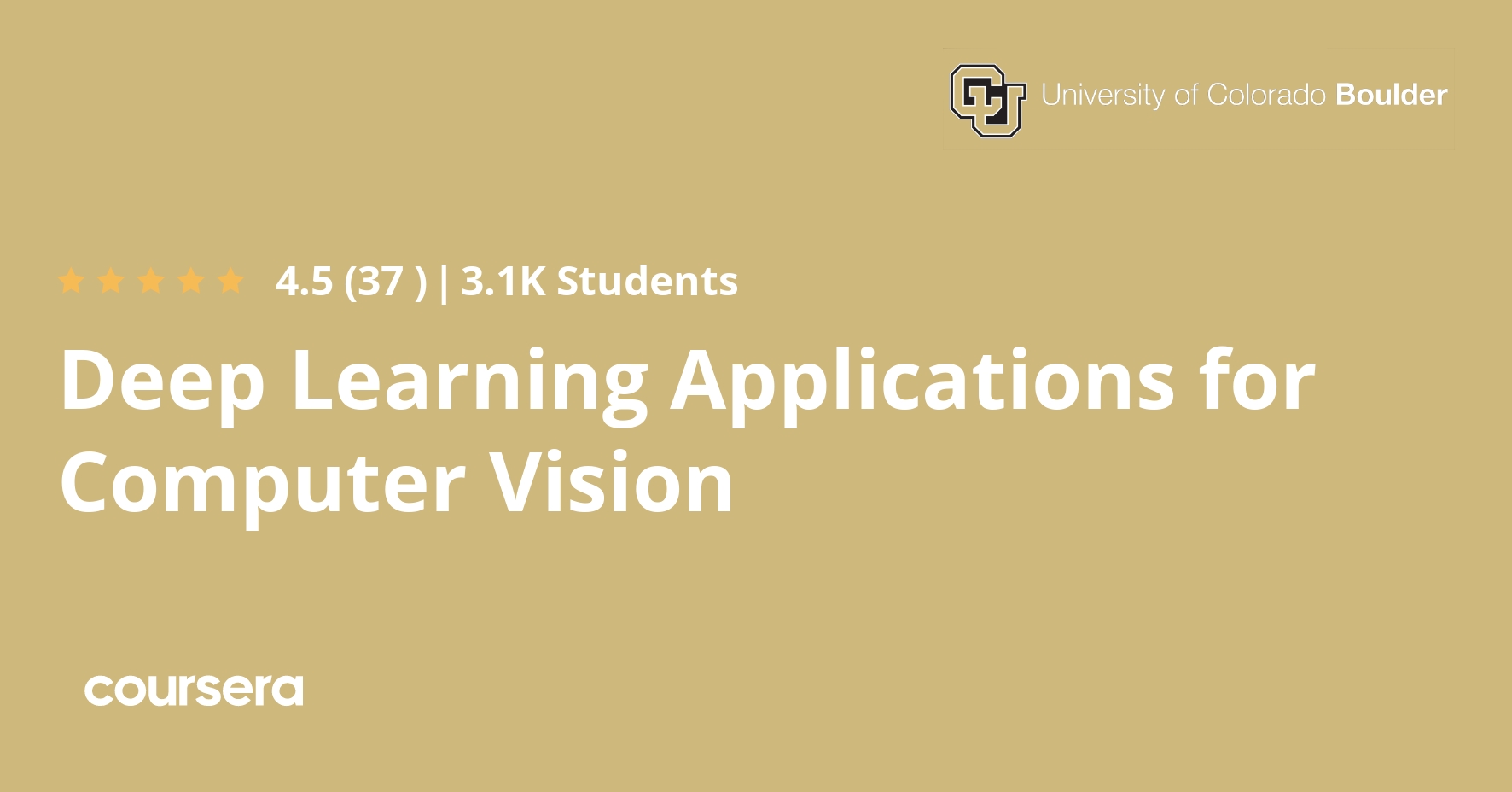Description
This course can be taken for academic credit as part of CU Boulder’s Master of Science in Data Science (MS-DS) degree offered on the Coursera platform. The MS-DS is an interdisciplinary degree that brings together faculty from CU Boulder’s departments of Applied Mathematics, Computer Science, Information Science, and others. With performance-based admissions and no application process, the MS-DS is ideal for individuals with a broad range of undergraduate education and/or professional experience in computer science, information science, mathematics, and statistics. Learn more about the MS-DS program at https://www.coursera.org/degrees/master-of-science-data-science-boulder.
In this course, you’ll be learning about Computer Vision as a field of study and research. First we’ll be exploring several Computer Vision tasks and suggested approaches, from the classic Computer Vision perspective. Then we’ll introduce Deep Learning methods and apply them to some of the same problems. We will analyze the results and discuss advantages and drawbacks of both types of methods. We’ll use tutorials to let you explore hands-on some of the modern machine learning tools and software libraries. Examples of Computer Vision tasks where Deep Learning can be applied include: image classification, image classification with localization, object detection, object segmentation, facial recognition, and activity or pose estimation.
What you will learn
Introduction and Background
In this module, you will learn about the field of Computer Vision. Computer Vision has the goal of extracting information from images. We will go over the major categories of tasks of Computer Vision and we will give examples of applications from each category. With the adoption of Machine Learning and Deep Learning techniques, we will look at how this has impacted the field of Computer Vision.
Classic Computer Vision Tools
In this module, you will learn about classic Computer Vision tools and techniques. We will explore the convolution operation, linear filters, and algorithms for detecting image features.
Image Classification in Computer Vision
In this module we will first review the challenges for object recognition in Classic Computer Vision. Then we will go through the steps of achieving object recognition and image classification in the Classic Computer Vision pipeline.
Neural Networks and Deep Learning
In this module we will compare how the image classification pipeline with neural networks differs than the one with classic computer vision tools. Then we will review the basic components of a neural network. We will conclude with a tutorial in Tensor flow where we will practice how to build, train and use a neural network for image classification predictions.









